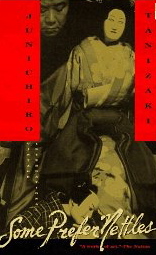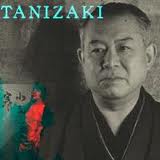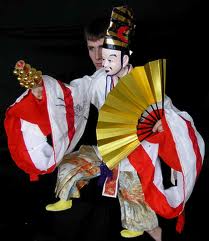Individual freedom vs. cultural traditions
Written in 19 29, Some Prefer Nettles is as relevant and fresh today as it was more than eighty years ago. Illuminating the conflict between the old, traditional ways of Japan and western, “modern” influences, obvious in Tokyo even in the 1920’s, this story of an unsuccessful marriage could be contemporary, except in the details. The social unacceptability of divorce in Japanese culture and the resulting tensions felt by three generations of a Japanese family allow the western reader to enter an emotional world, a world of conflict rarely shared with outsiders and almost never understood.
29, Some Prefer Nettles is as relevant and fresh today as it was more than eighty years ago. Illuminating the conflict between the old, traditional ways of Japan and western, “modern” influences, obvious in Tokyo even in the 1920’s, this story of an unsuccessful marriage could be contemporary, except in the details. The social unacceptability of divorce in Japanese culture and the resulting tensions felt by three generations of a Japanese family allow the western reader to enter an emotional world, a world of conflict rarely shared with outsiders and almost never understood.
Kaname and his wife Misako “do not excite each other,” but they are stuck, perhaps permanently, in their loveless marriage. If Misako leaves Kaname, she will have to return to her father’s home, a social outcast, without her son, who will stay with his father. Kaname will also suffer–he has failed as a husband. Considering himself “modern,” Kaname has allowed Misako to take a lover, while he finds satisfaction in geisha houses and with prostitutes.

As we follow this unhappy couple, we watch Kaname come increasingly under the influence of his conservative, traditional father-in-law, becoming more and more fascinated with old traditions–wearing the kimono, visiting the Bunraku puppet theatre, and appreciating the behavior of O-hisa, his father-in-law’s doll-like mistress–while Misako relentlessly pursues materialistic and selfish goals, presumably western.

The Bunraku Puppet Theatre
Tanazaki creates beautifully realized domestic scenes, and his subtle dialogue reveals character by what is not said as much by what is said. Kaname is a sympathetic character torn by his culture and loyalties, a man at the mercy of a cultural tradition which he also embraces. The culture itself is presented lucidly, allowing the reader to admire both the depth of its traditions and the forms, artistic and otherwise, through which it is expressed. This fascinating novel offers a westerner much to contemplate as we see how our emphasis on the individual engenders inevitable conflicts with societies valuing tradition and cultural uniformity.
ALSO by Tanizaki: DEVILS IN DAYLIGHT, A CAT, A MAN, AND TWO WOMEN, THE MAIDS, IN BLACK AND WHITE
Notes: The author’s photo comes from http://swiftywriting.blogspot.com
The Bunraku Puppet Theatre is illustrated on this site: http://news.byu.edu
